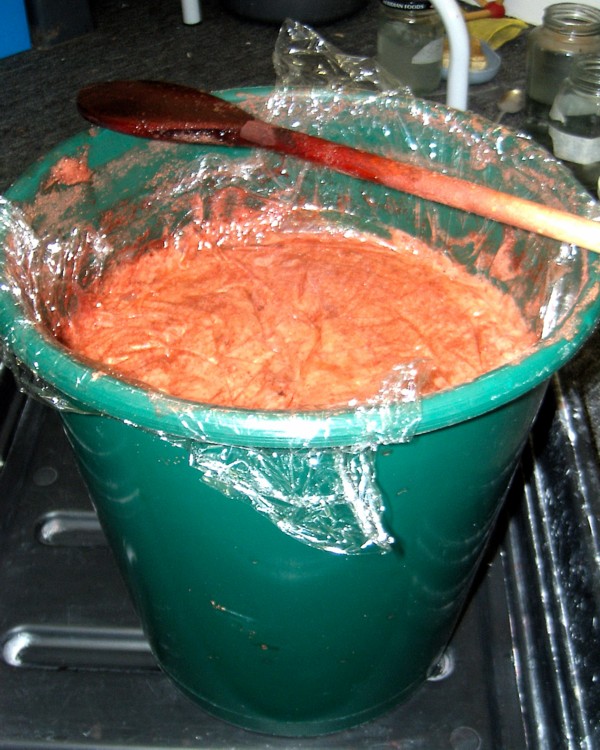B. Cold dye with madder roots
 This madder dyeing method is based on the Nest Rubio technique and takes several days. Alizarin, the main dye component of madder, is not very soluble at cold temperatures and it dissolves slowly, hence the long dyeing time. This madder dyeing method is based on the Nest Rubio technique and takes several days. Alizarin, the main dye component of madder, is not very soluble at cold temperatures and it dissolves slowly, hence the long dyeing time.
Ageing madder roots
a) Place the liquidised madder roots in a bucket. Fill the bucket with cold water and add the calcium carbonate. Lay cling film right on the surface of the liquid to prevent the formation of mould and leave the vat for four to seven days. Occasionally lift the cling film and stir the liquid in the bucket. Leave the bucket at room temperature.
b) Add the pre-soaked mordanted fibres to the bucket with the liquidised madder roots, stir it well and put the cling film back.
c) You will find that bits of madder root get everywhere in the fibre but they do not stick as badly to the fibre as brazilwood or logwood chips.
d) Leaving the roots in the dye pot with the fibres produces a better colour than either straining the roots before adding the fibre or putting the roots in a muslin bag. However, if you dislike removing little bits of root from your wool you can soak the blended roots for a week, strain them and then add the wool. You may prefer to use cold dyeing for lengths of fabric, as it is easier to shake the little bits of madder roots from the fabric than from fleece or skeins of wool.
e) After dyeing, let the fibre dry well for a day or two. Shake the fibre very well outside, to remove as many loose bits of root as possible and wash the fibre well.
Top of page
|